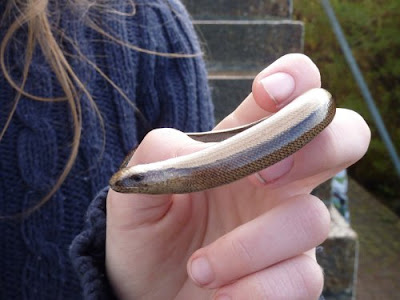Having picked up the family on Friday night it was now a case of doing DIY and family-based activites so birding would be somewhat curtailed. On Saturday, since the rest of them like to lie in whereas I like to get up early I took the opportunity to nip down to Pendeen lighthouse for a spot of sea watching. There was a good strong north-westerly wind so ideal conditions for Pendeen. There I met half a dozen or so birders already present and busy doing a one-hour count. They were all calling out the birds as they passed and each person had a click-counter for a different species. I sat down with them and duly started calling out the birds that I spotted. It was all rather quiet with nothing but auks, gannets and kittiwakes. Indeed the highlight during the short time I was there was a fulmar that I spotted (apparently the first one of the day) though there had been a sooty shearwater that went through before I arrived.
I soon had to leave to get on with more mould removal whilst the rest of the family went for a walk down to the fishing cove just to the north of the lighthouse. I would periodically peer out the window and I could see that things had definitely picked up on the seawith huge numbers of gannets streaming past and in the bright sunshine I could even make out small white dots which could only be auks with their low direct flight. It later turned out that a little shearwater went past mid morning as well as a Leach's petrel, good numbers of skuas and a few shearwaters so I missed a really good session!
 There were lots of "stormlets" passing through over the weekend: very small concentrated rain showers which pass through quickly. This one had a rainbow at one end
There were lots of "stormlets" passing through over the weekend: very small concentrated rain showers which pass through quickly. This one had a rainbow at one endThat afternoon the girls wanted to go shopping in Penzance so I took L (our four year old boy) for a walk down to Treen cliffs where a barred warbler was supposed to be hanging out. Being on the south cost of the peninsula it was nicely sheltered from the northerly wind and L and I passed a pleasant hour or so sitting around watching the sea and failing to see any warblers. I did spot a stonechat, a kestrel and a rather late house martin. Then it was back to rendezvous with the girls for a spot of tea in Penzance and then back home for dinner.
Sunday morning I went down to the lighthouse again though the wind was much more moderate and there was just one other birder there. There were loads of kittiwakes but not much else until I spotted a distant skua which we both agreed looked like a pomarine. A couple of balearic shearwaters also went through and my companion had seen a few distant auks which might have been littles. I soon had to get back for a final bout of mould scraping. Whilst I was doing this B (our younger daughter) and L went out to look for slow worms and they managed to find one as well as a tiny newt.
After packing up it was time to set off for home via the scenic route along the west coast, stopping at Zennor for lunch at the hostel and Leylant Saltings where the girls visited the sweet shop and I had a brief scan of the estuary. I found the whooper swans but not the spoonbill though as we set off on the A30 I glanced down into Ryan's field (Hayle RSPB) where there was a large white sleeping bird which could well have been the spoonbill. Our journey home was uneventful and we arrived back at Oxford mid evening. It had been another enjoyable visit to this wonderful part of the country with some more great birds to see.










